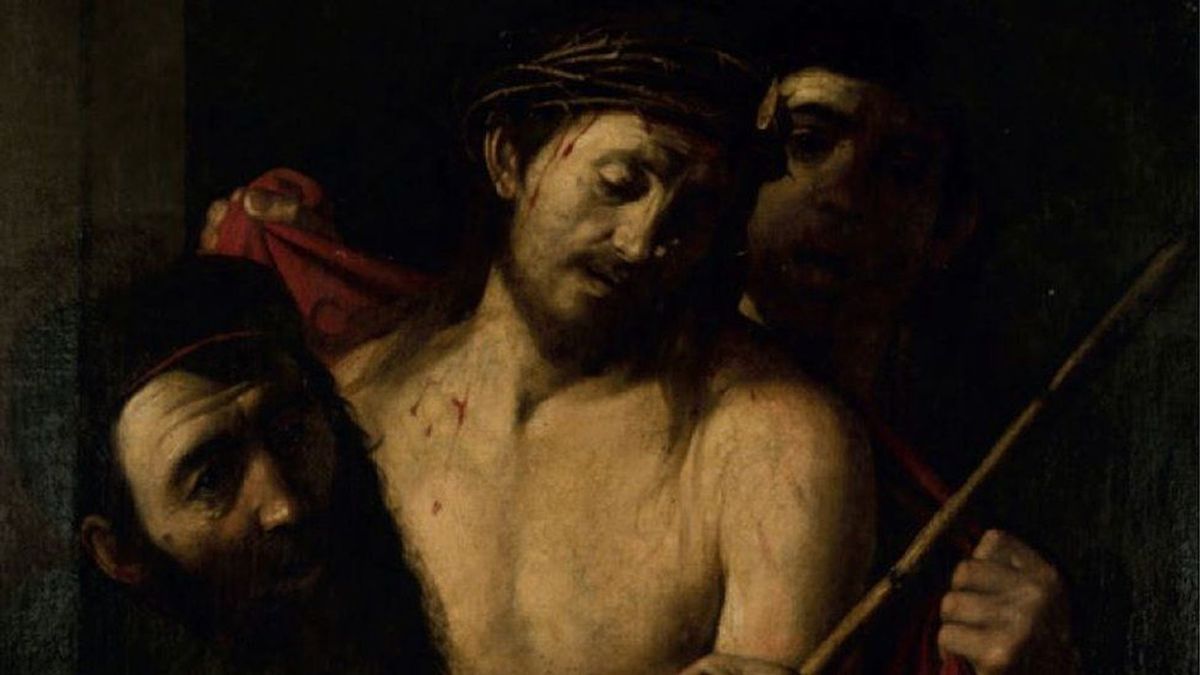The regional government of Madrid will have the opportunity to buy a newly discovered work thought to have been painted by the 16th-century artist Caravaggio. The work, known as The Crowning of Thorns, was withdrawn from an auction in Madrid last spring after curators from the Museo Nacional del Prado said there was “sufficient stylistic and documentary evidence” to suggest it could be an original Caravaggio. The regional government recently granted the work protected status, declaring it an item of cultural interest.
The piece was due to go under the hammer at Ansorena auction house on 8 April with a guide price of just €1,500. The small-scale painting was included in the online catalogue of Ansorena with an attribution to the “circle of [the 17th-century Spanish artist] José de Ribera”. The Spanish government subsequently imposed an export ban on the work.
The painting is owned by the three children of Antonio Pérez de Castro, founder of Madrid’s IADE design school, and the artist Mercedes Méndez Attard; they must inform the government before any sale in light of the protected status announcement. The London- and New York-based commercial gallery Colnaghi is overseeing the restoration, authentication and subsequent sale of the painting.
The Italian dealer Giancarlo Ciaroni initially tried to broker a private deal with the Pérez de Castro Méndez family, and suggested offering up to €500,000 for the work prior to the planned auction. “The best work will be done by Colnaghi but the work will still need to be scrutinised by the ministry [government]. There is a very high probability that it will be purchased by the Spanish state; the [purchase] figure will not be as high as if it were on the international market. The value is very difficult to establish in these cases as it is the result of countless variables,” says Ciaroni.
In a recent statement, the Madrid regional government supported the theory that the work is by the Old Master, saying: “The information that has appeared over the past few months, together with the studies undertaken by experts, reinforces the theory that it is the work of Caravaggio.” It also described the work in the UK newspaper The Guardian as “an example of the excellence and pictorial mastery of the Italian naturalism” that had a great influence on the Madrid school of painting in the 17th century.
“I saw this picture in Madrid; there is every chance it could be by Caravaggio,’ says Eric Turquin, the Old Master paintings specialist who previously attributed Judith and Holofernes (around 1607) to Caravaggio. He believes the state would have to pay the full market price for the piece. It is now expected that the work will sell for millions.
UPDATE (6 January): Jorge Coll, the chief executive officer of Colnaghi, says: "In Spain, unlike in England, the Spanish Government is not obliged to pay the full price. The government has the right of first refusal on the export price but it’s not obliged to buy the work if they don’t agree with the price. The work can be sold to any collector that agrees to keep it in Spain. The government will still have the right of first refusal on any transaction or offer that the owner receives for the painting."


